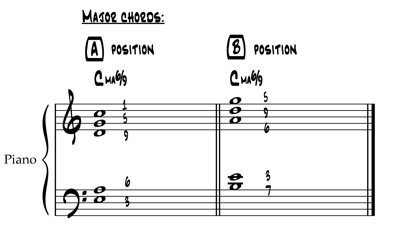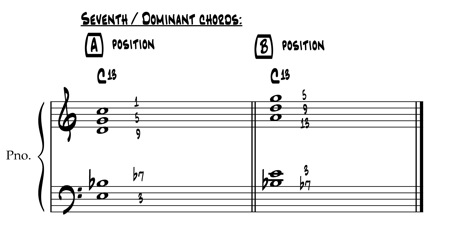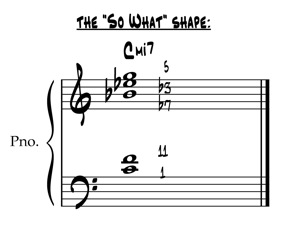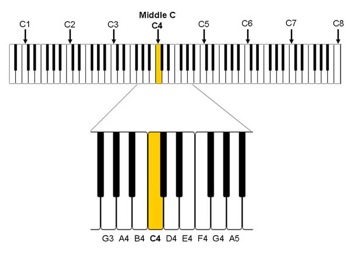Jazz piano voicings built primarily with the interval of a perfect fourth (P4), create a more open, spacious sound than voicings comprised of thirds and seconds. Jazz pianists typically play these voicings when “comping” within a rhythm section, accompanying a soloist.
Major 4ths voicings:
There is an A position and a B position in this chord type. The A position consists of 4ths descending from the root. The B position consists of 4ths descending from the 5th . Think numerically from the top downwards, using numbers derived from the major scale related to the chord’s root.
Practice:
Use a practice method similar to what was outlined in the left-hand rootless voicings lesson.
In playing situations “plug it in” whenever a major chord is required: Maj7, Maj6, Maj9, Maj6/9, Maj6/9(7)
V7 Fourths Voicings:
With the exception of one note in the left hand (the b7), V7 fourths voicings are identical to their major counterparts, and should be conceptualized and learned using the same method. Tri-tones in the left hand (3 & b7) give the chord it’s dominant quality.
The “So What” Shape:
Pianist Bill Evans played this voicing shape on the piece, “So What”, from Miles Davis’ 1959 “Kind of Blue” album. The isolated voicing shape can be extracted and applied to most mi7 situations.
Play the voicing with two voices in the left hand and 3 voices in the right hand.
Think numerically and upwards, using numbers compared to a major scale related to the chord’s root.
Notice the intervallic structure. 3 fourths ascending from the root, with a major third on top.
Rule of Thumb:
To ensure that this voicing is played in the correct register, the bottom note in the right hand, played by the thumb, must be between middle C and the octave above middle C. (C4 and C5).
Practice:
Use a practice method similar to what was outlined in the left-hand rootless voicings lesson, with the realized exception that there is only one position for the “So What” shape.
When the voicing has been learned in 12 keys, use it often in playing situations, “plugging it in” anytime a mi7 , mi9 or mi11 is called for.




